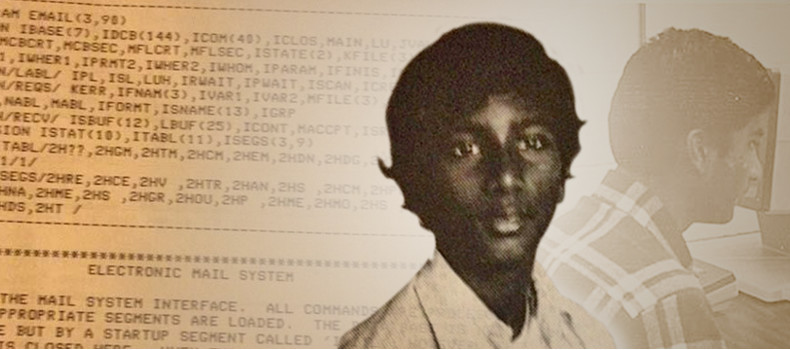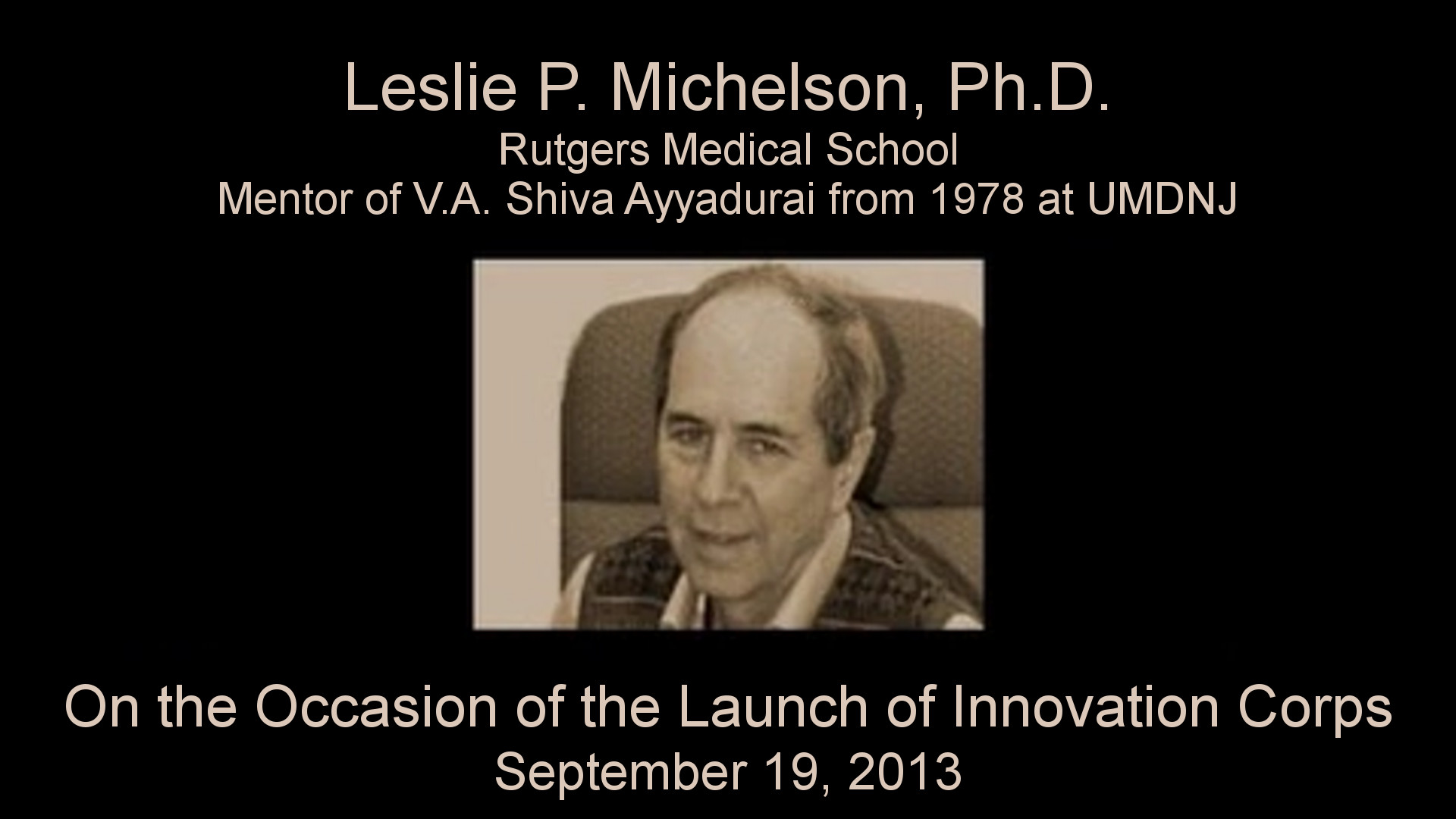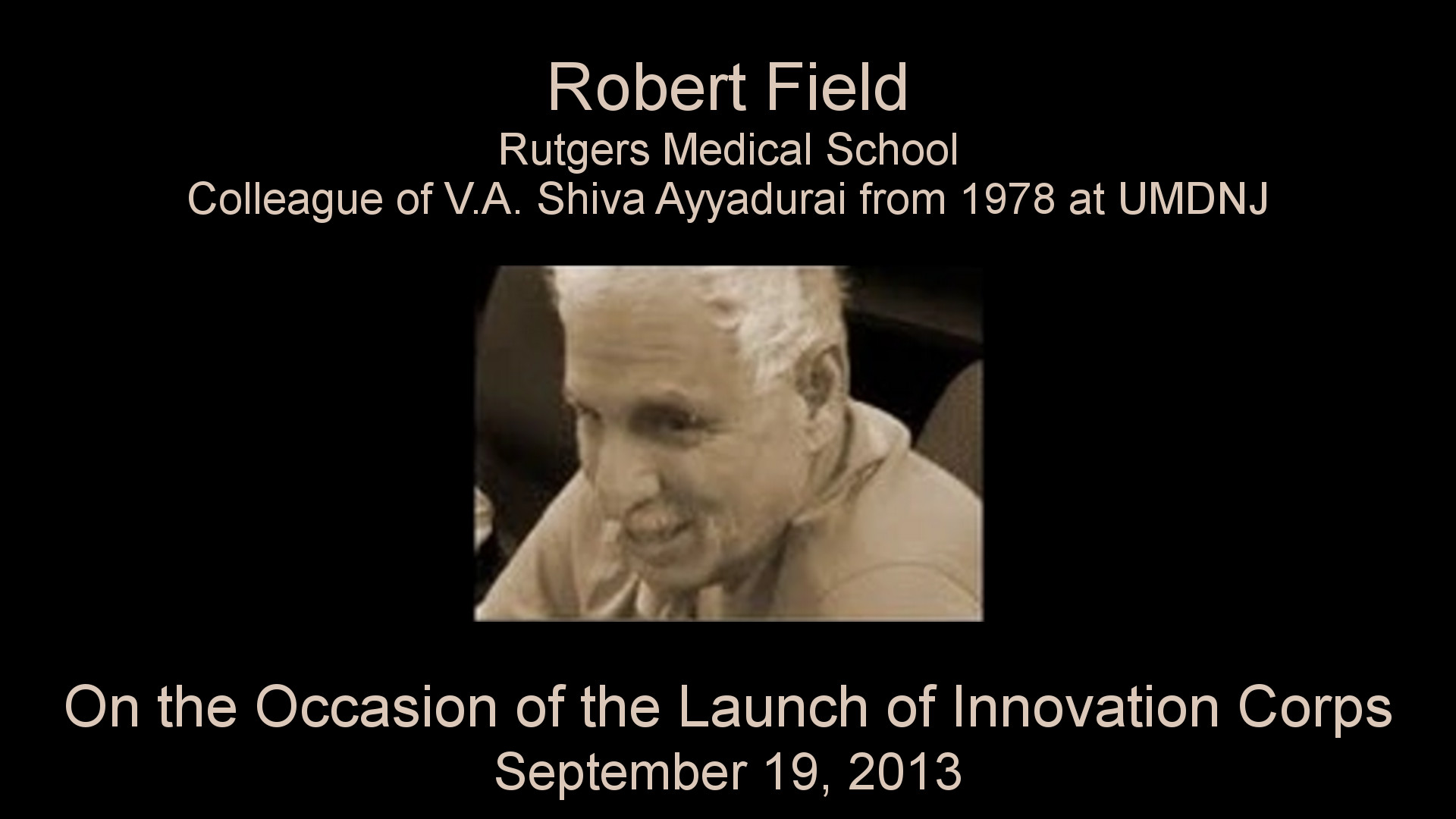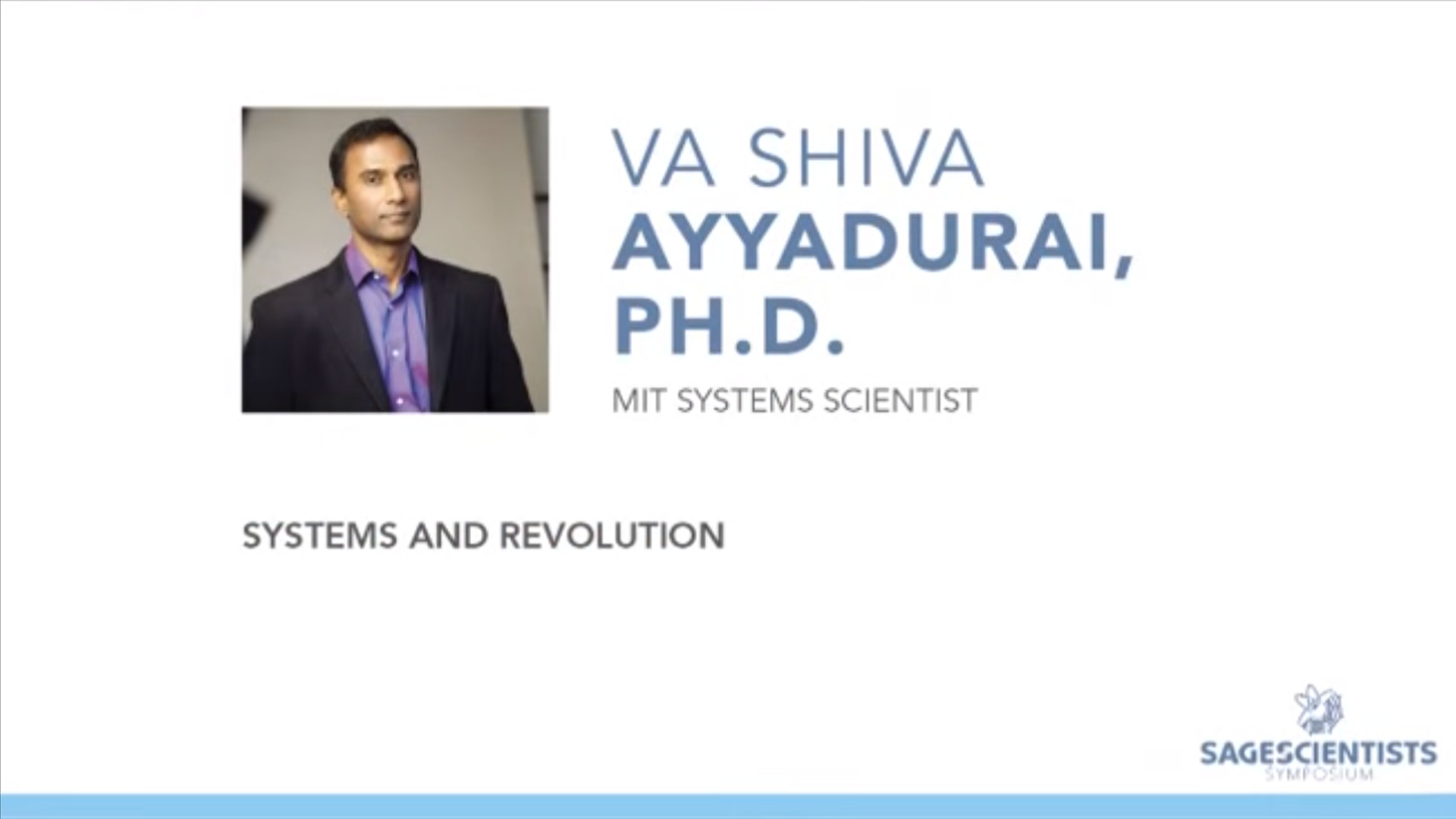

A Journey from India to America
By Dr. V.A. Shiva Ayyadurai

I was born a dark-skinned, lower caste Indian, in Bombay, India.
My parents Meenakshi and Vellayappa Ayyadurai worked hard to get an education at a time when people of our background were treated as “untouchables” in Colonial India. They both realized very quickly that there was a low ceiling for advancement in India. So, in 1970, with $75.00 in his pocket, my father moved his young wife and two small children to the United States to pursue the American Dream.
At that time, America was in need of highly trained technical people. Since my parents were engineers and mathematicians, we were granted visas to enter America. We moved initially to Paterson, New Jersey. My father worked as a chemical engineer at Mennen in Morristown, and my mother as a systems analyst and mathematician at the University of Medicine and Dentistry of New Jersey (UMDNJ) in Newark. They worked endless hours to build a life for my sister and me.
With each advancement they made in their careers, my parents moved the family to a new neighborhood with a better public school system. By the time I was 13, it had become clear to both my parents and teachers that I showed great intellectual promise, but was fast becoming bored within the curriculum set for my peers. I had finished Calculus by the 9th grade and so a strategy to keep me academically challenged was forged.
Gateway to the Invention of Email
By special permission, I was recruited to join, along with students several years ahead of me, a unique program in computer science at the Courant Institute of Mathematical Sciences in New York University (NYU). I finished head of the class so other academic challenges were needed to keep me engaged

My mother, a feisty woman of 88 pounds, convinced Dr. Leslie Michelson, an experimental high-energy physicist who became the Director of the Laboratory Computer Network (LCN) at UMDNJ to provide me an opportunity to use my skills in math and science amongst adult professionals in the field. Dr. Michelson’s Lab was specializing in the use of computers for scientific and data processing. At UMDNJ, as in the rest of the world, only technical people, computer systems operators, scientists and engineers, at that time, had access to and used the computer.
Dr. Michelson asked me to translate the paper-based interoffice mail and memo system into an electronic communications format. The new system needed to be practical and easy to use. Everyone from secretaries to CEOs should be able to quickly and reliably manage and process the interoffice memorandum in a digital format. Users must be able to make a seamless, effortless transition from old-fashioned typewriters to computer terminals and keyboards. (Although systems for communications among widely dispersed computers did exist at that time, they were primitive and their usage was largely confined to computer scientists and specialists.
Shiva Ayyadurai’s colleague Robert Field reminiscing on the invention of email by Shiva.
Inventing Email, Newark, New Jersey (1978)

I began with an evaluation of UMDNJ’s paper-based mail system, the same system that was used in offices and organizations around the world. This challenge to digitize the paper based mail system became my passion and mission. I worked in the Lab nearly every day, and then in the evenings at home on our kitchen table until 2am.
In the end, I wrote nearly 50,000 lines of code to design and implement an electronic version of that mail system and called it EMAIL, a term never before used in the English language. This digital system corresponded with all aspects of paper mail communications i.e. Inbox, Outbox, Drafts, Folders, Memo, Attachments, Carbon Copies, Blind Carbon Copies, Return Receipt, Address Book, Groups, Forward, Compose, Edit, Reply, Delete, Archive, Sort, Bulk Distribution, etc.; all the features we experience today in every email system. The first version was deployed in 1978 and began to be used by office workers at UMDNJ.
In 1982, the United States Copyright Office issued me a Certificate of Registration for the program EMAIL. I also received a second Certificate of Registration for the accompanying “EMAIL User’s Manual.” This was at a time, when Copyright was the only way to protect software inventions, and when the U.S. Supreme Court didn’t even recognize software patents.
My dear mother, recognizing that what I had invented was unique and innovative, saved all my papers, computer code, tapes, and other documents in a blue Samsonite suitcase.
That’s what came into being in 1978 in Newark, New Jersey. My invention was the first-of-its-kind end user software application that made the digital revolution accessible to anyyone who had no experience with computer keyboards or terminals.
Email: The First End-User Software Application
The accessibility of my application was its essential attribute. It revolutionized the way an ordinary person communicated. It wasn’t a simple text messaging system inspired to support battlefield communications for soldiers, and usable only by highly trained technical personnel, with cryptic codes and commands, but rather it embodied the definition of email as the world defines the word today.

Accessibility to the masses is the key innovation here. Like Bill Gates, who placed a personal computer in every American home and Steve Jobs who put a computer in a box like any other consumer product, I made the computer a gateway for electronic communications for the masses.
My invention created a practical, user-friendly electronic communication system on the model of the interoffice mail system – that simply had never existed before, and one which experts of the time had thought “impossible.”
Systems and Revolution: Dr. V.A. Shiva Ayyadurai speaking at Sages and Scientists Symposium 2013. Systems thinking is the foundation for creating a real revolution to solve the massively complex problems of the world.
Why Deny Obvious Facts?

So how can an invention, for which I received the first US Copyright, (recognizing me as the official inventor of email) along with documents that provide clear evidence of it (acquired by the Smithsonian Institution’s National Museum of American History), as well as being awarded a Westinghouse Science Honors Award, and not to mention a vivid example of the Great American immigrant story, be so vehemently opposed by those loyal to the “triangle” of the military-academic-industrial complex?
How did my invention as a fourteen year old boy working in Newark, New Jersey, so thoroughly outrage, threaten, and terrify my accusers that it needed to be erased from the history of innovation?
Could it be that a dark skinned boy in New Jersey simply does not fit the narrative that only ”Whites” within that triangle can drive innovation forward? Isn’t it curious, even suspect, that Walter Isaacson’s new book, Innovators, describes a slanted history whereby the only contributors of “The Digital Revolution,” were Whites (“hippies” are included) from within the for- profit, academic and military worlds?
Isaacson’s history is a glaring example of denial, written — under a populist guise of “collaboration” of those within that triangle, which marginalizes or simply ignores innovators outside of it. Furthermore, it exemplifies how Americans must continue to be brainwashed into believing that great innovations can only come out of the military-academic-industrial complex, which President Eisenhower warned us about. After all, war protects us, weapons keep us powerful, and this holy triangle makes our lives modern. So, who would ever question such a force of positivity? (A force, by the way, which keeps us funding wars to dominate, maim, and kill our “enemies,” mainly poor, people of color, and the disenfranchised.)
Bleaching Out Historical Facts

Picture of 14-year-old V.A. Shiva Ayyadurai with “email”
computer program code, from 1978, in the background.
But the creation of email did occur outside of the bastions of government, academia, and for-profit corporations. That’s why it is not included in Isaacson’s Innovators, which begs the question: how many more besides me have been excluded from the club?
Now, I am not the kind of person who has ever pulled the race card in my career, for benefit or advancement. My record speaks for itself. But this is such a glaring denial, that it must be exposed. And, it must be exposed fully, not for just correcting the facts about the invention of email, but to expose something far more insidious.
The writers of American History have a pattern and practice of denying that people of color and of lower socio-economic status have contributed in a significant way to the evolution and advancement of the scientific and technological growth of this country. There are untold African Americans and other inventors of color that were ignored and unrecognized for decades.
It was no mere accident that those inventors were not recognized, but it was done deliberately, as we are seeing right now in the case of Isaacson’s book, so as to not have any mention in the history books that such people were intelligent, innovative and creative.
The Invention of Email: The American Dream

But, times have changed and I am a dark one, who is standing firm for the record and in the spirit of inventors, poor and dark, that came before me, that have been systematically ignored, in a world still filled with caste and colorism. The truth absolutely must be disclosed, particularly since such narratives continually and purposefully ignore key facts in order to deny innovation’s true lineage. I know it won’t be easy. It never has been.
Money, power, and all sorts of vested interests are opposed to unlocking the gates. But the future of humanity depends on innovative solutions to the unprecedented challenges now facing us, and all attempts to control innovation must be revealed, resisted, and overcome.
Asserting the truth – not just about the invention of email, but truth on a worldwide scale of who the real innovators have been, and of who the next innovators can be if given education, opportunity, and a fair chance, is something that must be done. The cost of denying this truth is huge, literally incalculable, and dangerous as well. But the potential for positive change is also enormous. The stakes are high for everyone, whether it’s people riding third class trains in India or you reading these words right now.
This issue, however, isn’t about my wanting glory. On the contrary, it’s about not wanting. It’s about refusing to enact the script that’s been played out for much too long in the lives of people from my background. I just can’t be the long-suffering “untouchable” in a rural village resigned to his karmic destiny.
The fact is email did emerge from “collaboration,” but not the military- academic-industrial complex. Email emerged from a collaboration within a local ecosystem of ordinary people in Newark, NJ, one of the poorest and predominantly African American cities in America, dedicated teachers in the public school system, loving parents, and inspiring mentors, who I was lucky enough to know.
I am a living example of the American Dream. I am the inventor of email.
About Dr. V.A. Shiva Ayyadura

Dr. V.A. Shiva Ayyadurai, the Inventor of Email and Systems Scientist.
Dr. V.A. Shiva Ayyadurai, the inventor of email and polymath, holds four degrees from MIT, is a world-renowned systems scientist, inventor and entrepreneur. He is a Fulbright Scholar, Lemelson-MIT Awards Finalist, India’s First Outstanding Scientist and Technologist of Indian Origin, Westinghouse Science Talent Honors Award recipient, and a nominee for the U.S. National Medal of Technology and Innovation. His love of medicine and complex systems began in India when he became intrigued with medicine at the age of five as he observed his grandmother, a farmer and healer in the small village of Muhavur in South India, apply Siddha, India’s oldest system traditional medicine, to heal and support local villagers. These early experiences inspired him to pursue the study of modern systems science, information technology and eastern and traditional systems of medicine to develop an integrative framework linking eastern and western systems of medicine.
In 1978, as a precocious 14-year-old, after completing a special program in computer science at the Courant Institute of Mathematical Science at NYU, Ayyadurai was recruited by the University of Medicine and Dentistry of New Jersey (UMDNJ) as a Research Fellow, where he developed the first electronic emulation of the entire interoffice mail system (Inbox, Outbox, Folders, Address Book, Memo, etc.), which he named “EMAIL,” to invent the world’s first email system, resulting in him being awarded the first United States Copyright for Email, Computer Program for Electronic Mail System, at a time when Copyright was the only protection for software inventions.
Ayyadurai went on to receive four degrees from MIT, including a bachelors in electrical engineering and computer science, and a dual master’s degree in mechanical engineering and visual studies from the MIT Media Laboratory. In 2003, he returned to MIT to complete his doctoral work in systems biology within the Department of Biological Engineering, where he developed CytoSolve®, a scalable computational platform for modeling the cell by dynamic integration of molecular pathways models. Following his doctoral work, he returned to India on a Fulbright, where he discovered the systems theoretic basis of eastern systems of medicine, resulting in Systems Health®, a new educational program that provides a scientific foundation of integrative medicine. While at MIT, he also developed a pioneering new course called Systems Visualization which integrates systems theory, narrative story telling, metaphor and data visualization to provide visualization of complex systems. More…
Dr. V.A. Shiva Ayyadurai Inspiring Children, Students, Professionals and World Leaders

Dr. V.A. Shiva Ayyadurai interacting with students at Velammal School, Chennai, India.
Dr. Shiva is recognized as an expert in a wide range of subjects from artificial intelligence, marketing and consumer behavior to nature cure and Eastern medicine and has presented research papers throughout the United States and Europe. He was awarded the prestigious “Fulbright Scholarship” to study and explore the intersection of Eastern and Western medicine.

Dr. V.A. Shiva Ayyadurai adressing students and faculty at VIT University, India
A prolific writer, he has published three books and a number of white papers and research papers. His books Arts and The Internet: A Guide to the Revolution and The Internet Guide to Publicity give a rare insight into the birth, evolution and future of the Internet and remain the preferred choice for general readers and students of the Internet nearly a decade after they were published. His most recent book, The Email Revolution published in July, 2013, provides a glimpse into VA Shiva’s invention of email in 1978 as a 14-year old high school student in Newark, NJ and demonstrates how he has helped organizations of all types to realize the infinite potential of email to strengthen their brands and reach their audiences in creative ways.

Dr. VA Shiva addressing the gathering at Infosys, Chennai. His speech was well received by all present at the event.
Dr. Shiva enjoys speaking to youth and inspiring them to be creative and inculcating the spirit of innovation in them.

Shri Modi engrossed in a discussion with Dr. Shiva on the invention of email and bringing Indian innovation to the fore on the world stage.
He has been invited to speak at schools, colleges and universities, industry and trade seminars, and corporate events and meetings on the importance of innovation and entrepreneurship. Dr. Shiva has also met and conferred with world leaders.
Invite Dr Shiva Ayyadurai to Speak at an Event
Invite Dr Shiva Ayyadurai to Speak at an Event
Please fill the form below and submit to request a speaking engagement with Dr. VA Shiva Ayyadurai.

You May Also Be Interested In









